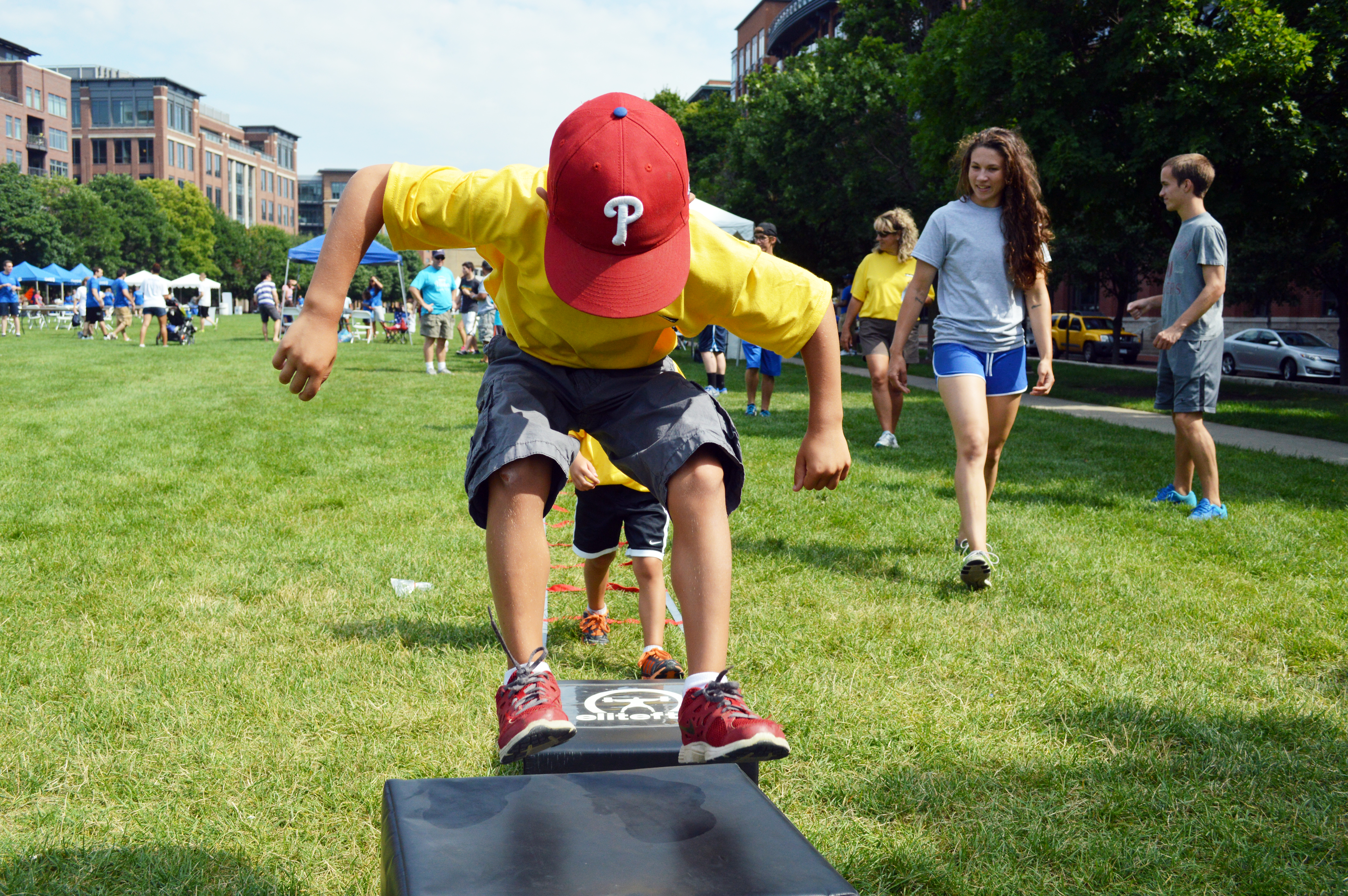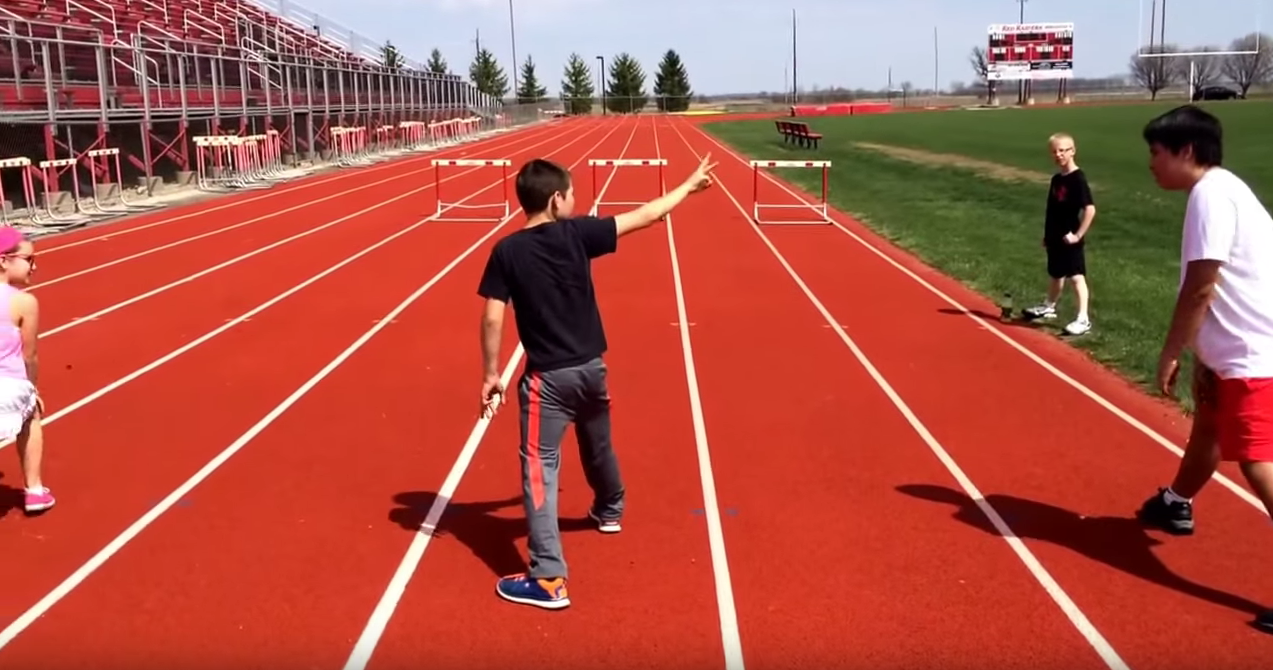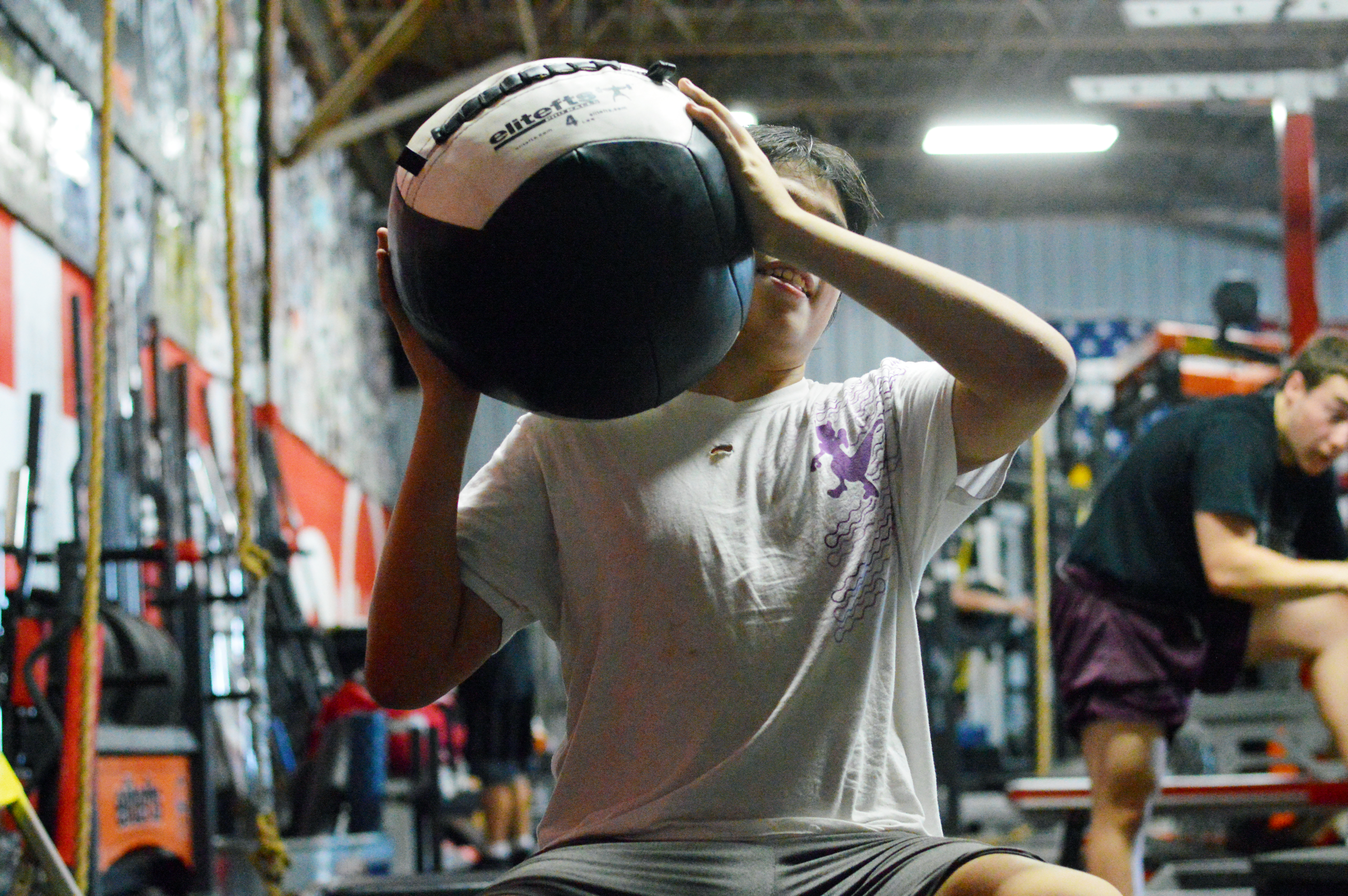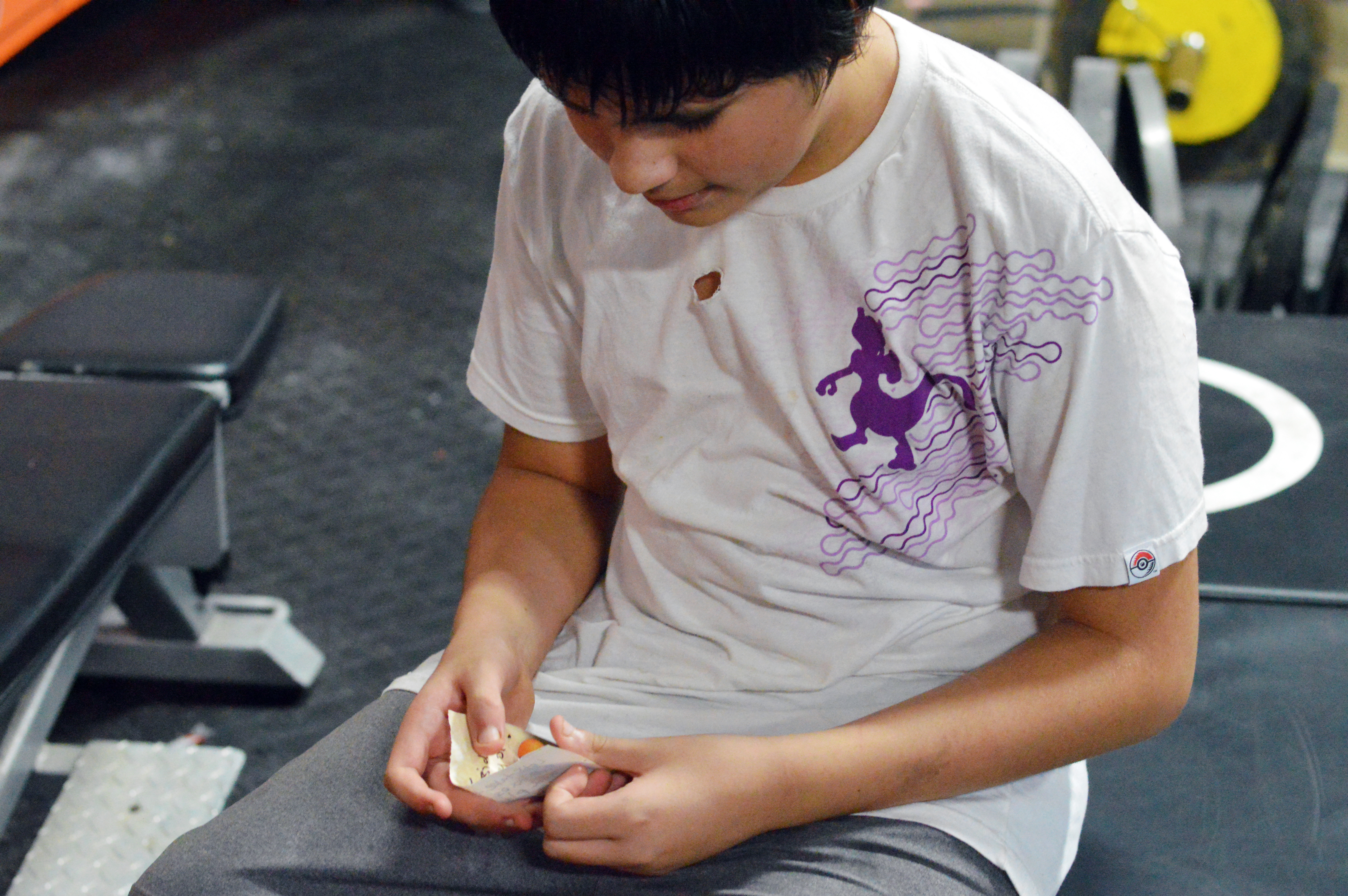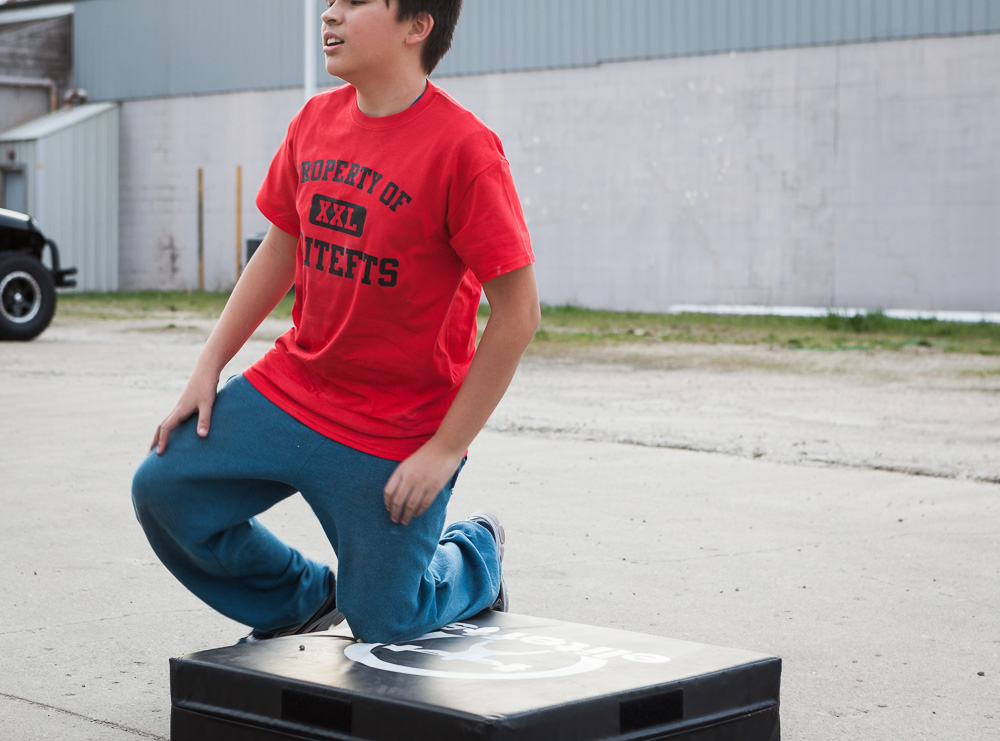
With countless amount of programs charged by individuals creating change for children and young adults on the spectrum, I’ve seen remarkable advancements in social skills through an active, hands-on/experience-based approach.
Naturally, this takes us to the gym.
This eight-article series provides ideas to advance an inactive, socially craving child/young adult into a physically and socially strong individual through movement and strength.
First in this series, we explored gym training — our home base, the place we find our greatest comfort and where we lay down the groundwork for the trainer and child to connect. If you haven’t already, please read Social Skill Integration Through Movement and Strength — Gym Training as this article will have greater effect.
In transition, we’ve trained alongside other gym members and invited new interactions to occur. We’ve expanded our associations with training and incorporated new places to work out within the gym area to communicate how training can be performed in multiple locations with a variety of equipment and people. We’ve considered the parking lot, a staircase, the gym entrance, a cardio room, and the powerlifting room as alternatives.
Now it’s time to move our efforts elsewhere — we’re ready to leave the comforts of the gym and move off-site.
½ Gym, ½ Off-Site Training
What
½ Gym, ½ Off-Site Training splits a gym session into two halves: one half takes place in the gym, the other half takes place off-site. It’s a weekly commitment to complete movement-based objectives in and outside of the gym while refining social skills learned in the gym, plus accumulate more.
On site for the first half of the session, we begin in a familiar setting, our home base (the gym) and read the schedule, gauge where the child is today, and perform various familiar activities and exercises. The off-site portion gets the child out of the gym and places him into a new location that requires physical activity and social engagement.
Why
Think of the off-site location as an extension of what has been previously learned in the gym. As an extension, the off-site excursion has meaning — it’s not just an excuse to leave the gym.
To illustrate, perhaps you’ve been riding bikes in the gym parking lot. Over a course of multiple weeks you’ve been timing short bursts of distances and you’re now ready to elongate your timed distance. This type of progression is the perfect opportunity to leave a familiar setting and travel to somewhere new, overriding a majority of the insecurities the child may have leaving the home base. You’ll be surprised how in some cases the child will elect for this — a hint that the idea of branching out is now not so foreign but yet logical. Now you have reason to locate a nearby biking trail to surpass your previous distance and set new standards.
Another way to use this type of training as an extension to gym training is when time has been devoted to learning multiple phases of a sport or parts of a skill (maybe the child is looking to make school try-outs or needs help with lessons being taught in gym class). Comparative to above, for multiple weeks you’ve been working on attaining and fine tuning new skills and naturally it’s the appropriate time to apply these skills in the appropriate environment: the baseball, soccer, track field, etc., to string previous lessons into a full circle.
As you can see, these opportunities are endless once a solid foundation is established. Look for these opportunities, or at the very least be aware of their existence, and you’ll begin to see how many options you have.
Again, our goal is to diminish anything in the abstract form and place the child in a setting where he or she can make progress through an active, hands-on, experience-based approach.
Recommended Reading: Check out the article Reintroducing the Jump Rope to see this progression in play. In 12 weeks, part 1 (the first 6 weeks) and part 2 (the final 6 weeks) demonstrate how simply attaining the skill of jumping rope begins in the gym and naturally takes us outdoors, off-site to the playground and then to a trampoline park.
Where
As this is our first time off-site, remain in close proximity to the gym. Whatever location you choose, it should be easily accessible (public and free). Easily accessible locations include a walking/bike trail, public playground, high school track and field, and the public pool.
Social Integration
The relationship between the child and trainer is the utmost important dynamic of this training type as we step foot onto new turf — an environment in constant flux. As we introduce many new things in this type of training (a car ride, new people, new expectations) your relationship with the child maintains the same: a bond signaling safety, trust, and interest. Assume the parents have gained trust in this union and find this type of training appropriate and beneficial for their child. If this has not taken place, reconsider your role and adjust expectations and your programming approach accordingly before moving forward.
Gym etiquette accumulated in our first type of training extends and is for the most part automatic. Find new ways to initiate and extend common courtesy, patience, mindfulness, acknowledgement, appropriate conversation, appropriate attire, good hygiene, preparedness, readiness, and spatial awareness. Reiterate the importance of taking breaks when needed.
Comfortable with peer-to-peer interaction in our gym environment, moving off-site is a great opportunity to interact with new people similar in age and development, initiate/respond to engagement, practice appropriate conversation, and model team-building skills when/if appropriate: setting/following rules, taking turns, dealing with winning and losing, demonstrating leadership skills, accepting criticism, and maintaining a positive attitude.
Planning
½ Gym, ½ Off-Site Training is intended to continue to meet our short and long-term training goals previously determined through gym training.
Begin planning by organizing this training type into four parts. We have the gym portion as the first section, the car ride (or transitive means to get from one location to the other) next, the off-site portion as the third, and the car ride returning to the gym as the final part. Use these tips to guide your planning:
Gym
This is everything familiar to the child. Use this time to gauge if today is a good day to venture off-site. Always have a back-up plan. If it’s not in the best interest of the child to leave, stay. It’s even possible to shut down the entire training session. This is where parental feedback will help guide you, too. If it’s necessary to stay at the gym be 100% committed with this decision and don’t let the other plans on paper cloud the session. Therefore, in no way will you communicate that you’re disappointed and letdown that your plan has changed.
Otherwise, use this time to emphasize and bring attention to off-site work — there should be no surprises. In many cases you’ll have to relay that in order to get to point B (off-site work), we have to start at point A (gym work). This can get the child to accomplish work in an efficient and energetic manner that would otherwise not exist.
Drive to Off-Site Destination
The drive can be very telling. This may be the time to insert gaming, silence, heavy or light conversation, and/or a nap. Allow the child to dictate how this window of time is spent. For example, forcing conversation can have a detrimental effect whereas a ride in silence can allow the child to relax and maintain/accumulate energy stores.
Off-Site
Do realize you may not be the sole facilitator in modeling appropriate social and physical skills when off-site. This process may unroll from peer-to-peer intuitively. Perhaps a child other than your client will take the reigns as you watch from afar. In this case, your presence without interfering is key.
In any case, the child should have an idea of what she’s looking to accomplish off-site and sense a starting place, an end place, and all the distinct tasks in between. To stay on task, have the schedule with you and check off as you go. Also, schedule in flexibility by giving the child some choice.
Drive to Gym
You may notice after spending time offsite, this experience depletes or charges the child. In any case, it’s not necessarily the time to follow up the experience with a rapid-fire Q&A. Let the child dictate how this time is spent. Your goal here is to return the child to the gym in a calm and content state of being so she transitions to the care of her parents in a smooth fashion.
Schedule
In Gym Training we established the best way to display and present the schedule to the child. This may be utilizing a storyboard a few days prior to training and/or writing the schedule on a chalkboard or white board and checking off items as we complete them, and/or providing both. It may be that no visual is needed and its use causes undue anxiety and instead verbal instructions are preferred.
In ½ Gym, ½ Off-Site Training, begin the session in the same starting place, using the same mode of communication that proves to work best for the child. I like to use the dry-erase board and summarize the entire day in one place with a quick glance (using words and drawings). As you move off-site I recommend having a copy of the off-site portion in hand — this keeps us on track and makes the experience mission-based with a sense of agenda. Take a picture of the dry-erase board with your phone and use that as a reference. Write a copy of the off-site portion into a notepad with a pen and cross off each completed task.
Reminders to keep in mind: Keep the schedule short and sweet. Consider how more words and pictures may communicate more work and strain, and we don’t want this to be the perception. The schedule is a rough sketch to provide order and for you to be able to fill in the blanks in person. I mention it’s a rough sketch because you should use it as a flexible plan. It’s what you’d like to accomplish in a perfect world but you’re fully in acceptance of change and disorder. You’re not listing all the social skill opportunities unless not listing them would result in adverse behavior (small cues are acceptable). What is listed (the order, the amount of rest, the types of exercises/ activities, the time frame, with whom, game rules, etc.,) is individualized for the child in hopes of accomplishing whatever it is you’re looking to accomplish, short and long-term.
To give you something tangible to work with, here is an example of a 60-minute schedule for ½ Gym, ½ Off-Site Training. Obviously your plan will look much different depending upon the needs of the child and the resources available, but it will at least give you pace, ideas of how to organize a plan, and maximize space. Notes to follow.
60-minute Schedule Outline
5 minutes: Welcome/ Warm-up at Gym
- [Exercise]
- [Exercise]
10 minutes: Work
- [Exercise]
- [Game]
- [Exercise]
10 minutes: Drink/Snack/Rest/Prep to Leave
5 minutes: Car ride to Off-site
20 minutes: Off-site Work
- [Exercise]
- [Game]
- [Exercise]
- [Choice]
5 minutes: Car ride to Gym
5 minutes: Cooldown/Feedback/Goodbye
Notes
As an example, in this 60-minute training session we move from on-site to off-site and finally return to our original starting place. Through the welcome, gauge where the child is today, ask for parental feedback, and read the schedule. I tend to have the warm-up ease us into the session as we get our heart rates up, providing more time for me to gauge and assess. Warm-up exercises have association with the workload and/or game(s) to follow. Pick and choose where it’s best to insert high effort and intensive work. This again is individualized for every child. Now that working off-site is priority and new (more intensive for every one of our five senses), gym work may remain familiar with subtle change until moving off-site becomes habit and less invasive.
Do consider your assumptions and expectations off-site. Ease into this. The worst thing you can do is cater to the idea that off-site work is painful. So if by chance you overload the child without realizing it, modify immediately. Remember, your role is to (re)shape associations involving movement and social interaction into positive associations. Therefore, in the first couple of weeks, consider the change in schedule and environment to be the intensive aspect of the entire schedule and everything else within this framework (games, physical and social skills, and exercises) maintain familiarity, fun, and joy, giving the child every excuse to show competency and a sense of control. It’s THEN, we can slowly tweak and intensify the physical and social demands to progress to the next type of training.
The rest period gives the child a chance to rest and relax. This is a great opportunity to sit down, talk, drink water, eat a light snack, and transition off-site. Be sure to pack: a phone (in case of emergency), any required equipment, water/snack, the schedule, a pen, and medication (if needed).
The choice portion gives the child freedom to choose what she would like to do for five minutes off-site. This is a great opportunity to gauge interest in our new environment. Begin by providing three options and have the child pick one. Eventually, the child will be comfortable enough to create his own choice…creative ideas you’d never imagine!
End the session by returning to the gym, bring the heart rate down, and resume to a calm state of mind. Say goodbye and provide the child and parents with performance feedback.
Recommended Reading: Adjustable Programming: Using Flexible Goals in an Inflexible World. This article takes us to the high school track, a place (the school) where Blaine had strong association with pain and heartbreak. Through the use of the ½ Gym, ½ Off-Site Training we eliminated negativity and met long-term programming goals. Within is a scheduling example, the car ride, and peer-to-peer coaching.
Transition
The next type of training is Off-Site Training. This is where the entire session takes place off-site. In transition, we’ll continue to start our training at the gym but slowly increase our time spent off-site. In doing so, we are traveling farther distances, meeting and interacting with new people, and adding diverse accomplishments to our training belt outside of the gym.
Thanks for reading. Please use the comments section below to ask any questions. I’d love to help any way I can.
WHOLE SERIES









